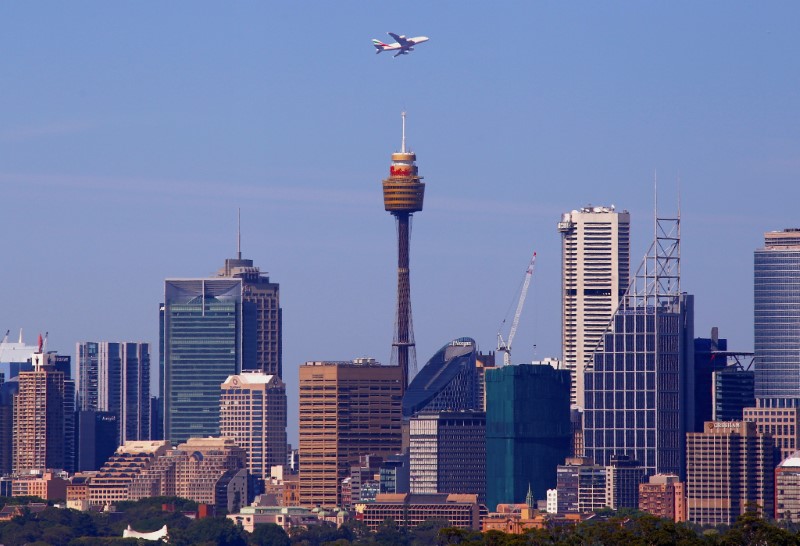By Swati Pandey
SYDNEY, Nov 30 (Reuters) - Australia's economy expanded by the most in 12 years last quarter, data will likely show this week, though the country is not out of the woods yet with fiscal stimulus being tapered and coronavirus-hit companies still reluctant to boost spending.
Official figures on Wednesday will show the economy grew about 2.5% in the July-September quarter, according to a Reuters poll, bouncing back from its first recession since 1991. Gross domestic product slumped 7% in the previous three months when coronavirus curbs brought much of the country to a standstill.
Growth in the current quarter is seen even stronger as the state of Victoria, formerly a COVID-19 hotspot, emerged out of its marathon lockdown in October, while other states broadly reopened in May. Most of Australia, including Victoria, has not seen new community cases for weeks. so, the country's central bank is expected to keep policy rates near zero and extend its A$100 billion ($73.86 billion) quantitative easing programme next year as inflation and unemployment are likely to undershoot its target range for a while yet. biggest unknown is whether consumer and businesses spend," said Peter Munckton, chief economist at Bank of Queensland.
But business investment, badly needed to boost productivity and growth, is still on ice while unemployment has risen to 7.2% from under 5% before the pandemic and there is no sign of wage inflation. central case economic forecasts for the next two years is still not good enough," Munckton added.
"Current projections have fiscal policy support being sharply reduced in the next financial year. It also means that the Reserve Bank may have to further increase the size of its bond-buying program."
Australia's conservative government has unleashed A$300 billion in emergency stimulus to help pull the economy out of its historic COVID-19 slump.
That, together with monetary stimulus, has seen business and consumer confidence pop higher in recent months while household spending has jumped too. House prices and home loans are on the rise as well. data prompted most economists to upgrade their GDP forecasts for the final two quarters of 2020.
A bounce in fourth-quarter GDP would make Australia and New Zealand the outliers, with growth in other parts of the developed world expected to slow as countries face a fresh wave of infections.
Some expect Australia's economic output could return to pre-pandemic levels in the first half of next year.
In contrast, some countries in the northern hemisphere have had to resume lockdown conditions, suggesting "expectations for pre-COVID activity levels will need to be pushed out further into the future," said Citi economist Josh Williamson. ($1 = 1.3539 Australian dollars)
